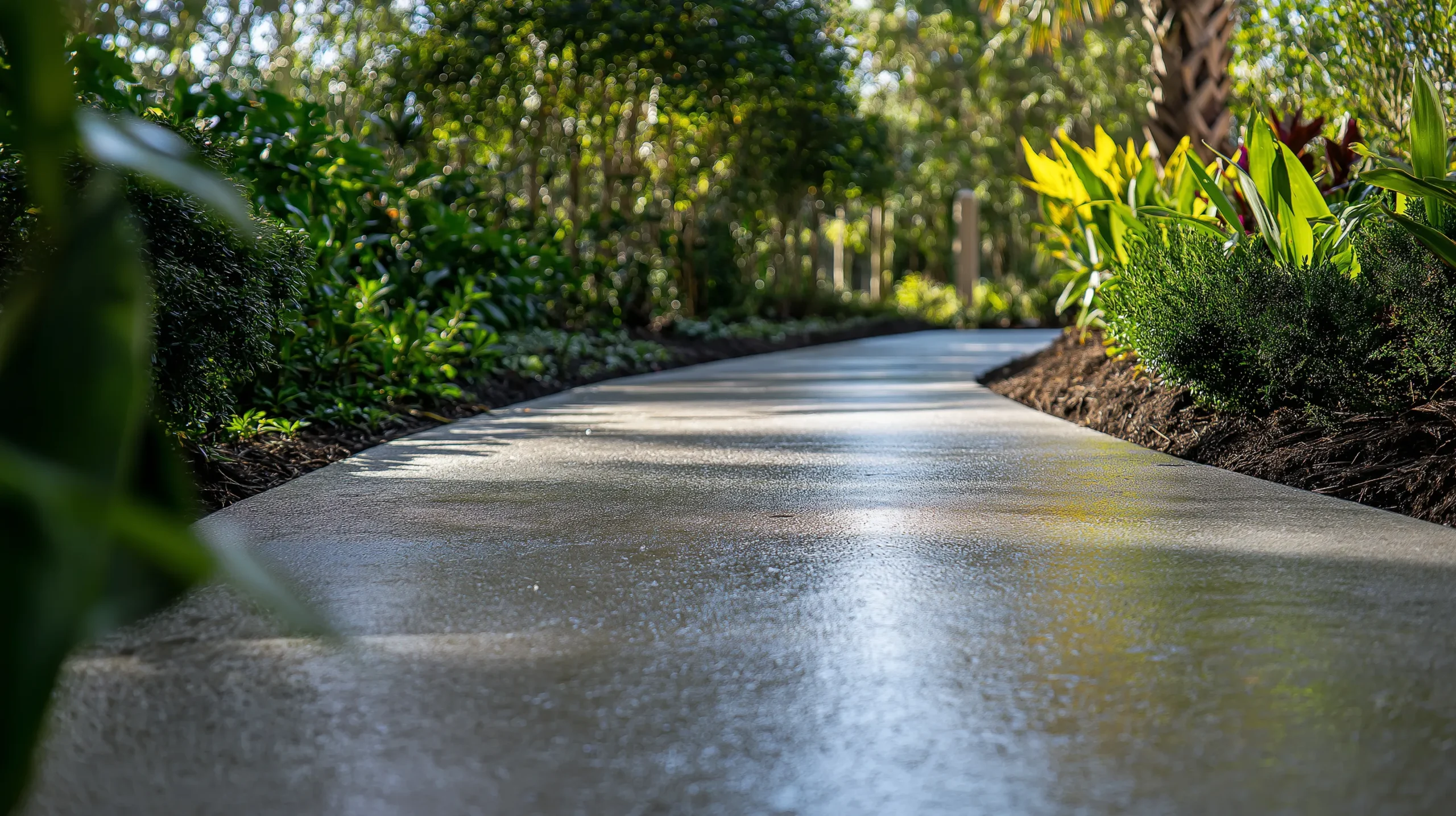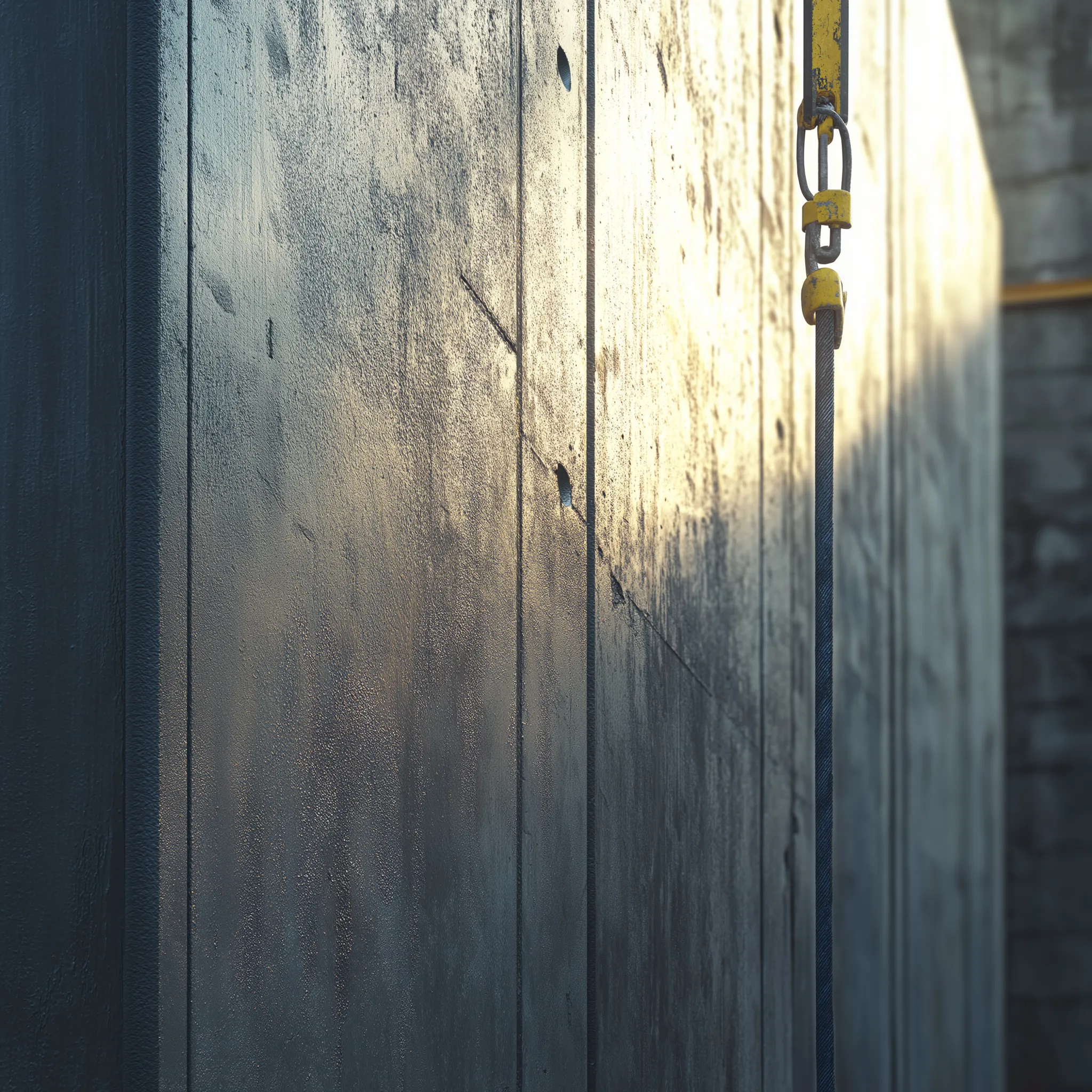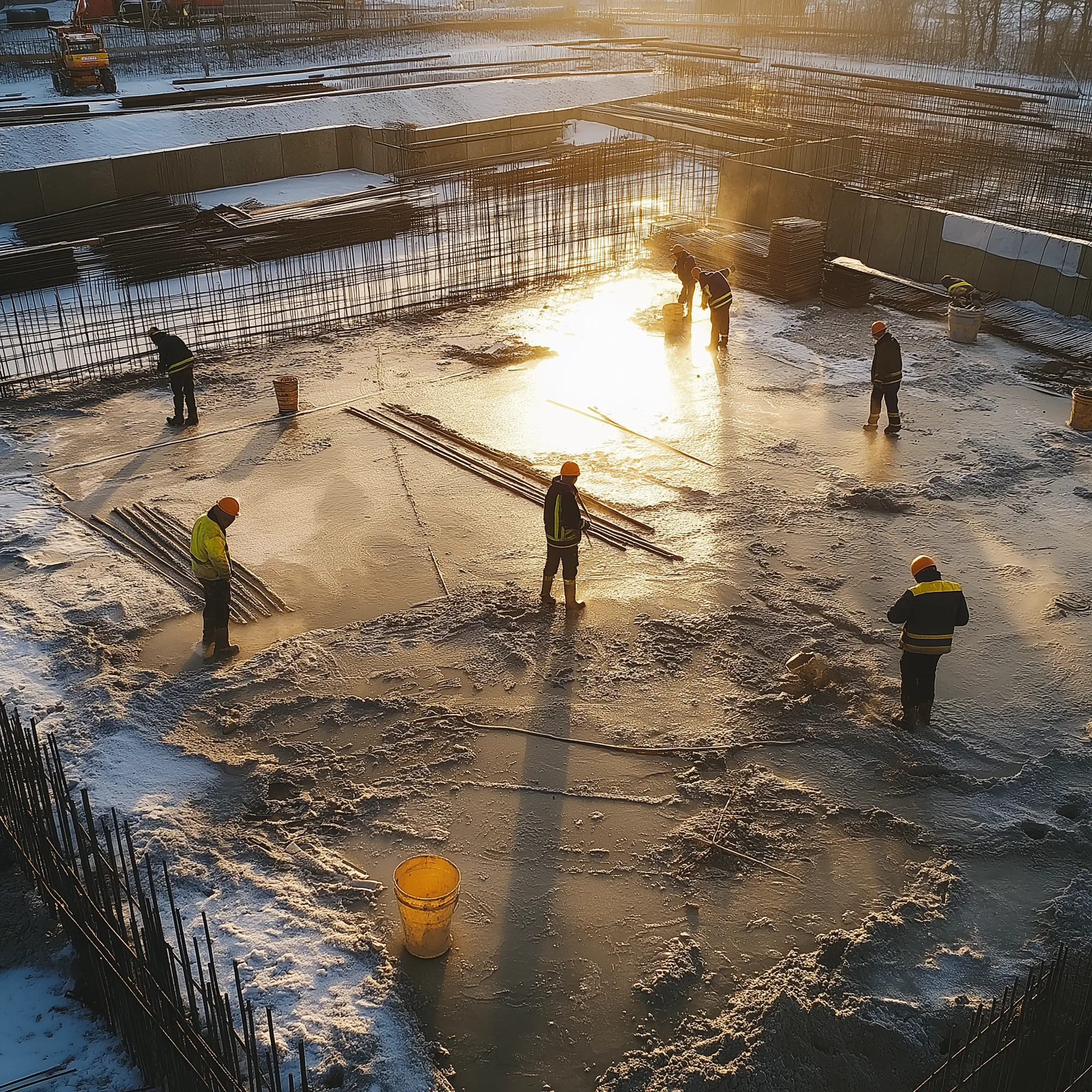1. Apply product to hardened concrete. For best results, we recommend that new concrete cure seven (7) days or longer. SpecChem’s E-Cure is the preferred curing method. Membrane forming curing compounds may be used but must be removed before application of SpecChem’s SpecHard-Intraseal. Apply water-based SpecHard-Intraseal when temperatures are above 4°C (40°F) and below 40°C (100°F).
SpecHard-Intraseal is not a curing compound, however some contractors want to use it that way. This is not recommended. Green concrete still has too much water in it to allow necessary product penetration into the concrete. If necessary, SpecHard-Intraseal can be applied after three (3) days at 70°F (21°C) or above. However, long term performance may be compromised if SpecHard-Intraseal is applied this early. A “spiff coat” of SpecHard-IntraSeal should be applied at 28 days if early application is done.
2. Apply one generous coat at 200 sq.ft. gallon. SpecHard-Intraseal should be physically scrubbed into the floor. Riding or walk-behind mechanical floor scrubbers are recommended. For small jobs, a stiff bristle broom may be used. The floor must be kept continuously wet with the product for 30 to 45 minutes. SpecHard-Intraseal will penetrate approximately 1/8” into the concrete. A satin sheen will result from the scrubbing if the floor is hard-troweled. After 20-30 minutes, depending on the temperature and humidity, SpecHard-Intraseal will begin to gel and become extremely slippery. Workers should use extreme caution at this stage to avoid falling.
Activate the thickening SpecHard-Intraseal after the initial scrub period by lightly spraying the floor with clean water and continuing the scrubbing action for an additional 10-15 minutes. This step accelerates the chemical reaction of the SpecHard-Intraseal with the concrete floor and drives the product deeper into the slab.
3. Flush and remove the remaining product with water and squeegees, finishing with a damp mop to remove any streaks. SpecHard-Intraseal is environmentally safe. There are no hazardous chemicals in SpecHard-Intraseal to worry about. Follow local guidelines regarding disposal of diluted SpecHard-Intraseal residue.
Use lots of water to rinse the residue off. Product performance will be enhanced by this action. DO NOT ALLOW SPECHARD RESIDUE TO DRY ON THE SURFACE OF THE FLOOR. Any SpecHard-Intraseal left to dry on the floor surface will leave stubborn white stains which are very difficult to remove, and could require mechanical grinding to remove.
A second coat may be required for extra protection against oils and other contaminants, or to hasten a shine, but it is not normally required. If a second coat is scheduled, allow the first coat to dry before applying the second coat.
Most SpecHard-Intraseal projects are interior floors, however, this product can be used outside as well. A note of caution – since the shine of a SpecHard-Intraseal floor is dependent on a tight, hard troweled finish and the density of the concrete, it must be remembered that exterior concrete is generally rough-finished and may be more porous than interior floors. This only affects the shine – not the dustproof performance of a SpecHard-Intraseal floor.
Variations in the hardened concrete appearance will depend on the concrete quality and its finish. On hard-troweled floors, a shine will be quickly apparent in most areas. With continued regular cleaning and washing, floors treated with SpecHard-Intraseal will continue to polish and, as time passes, require less and less maintenance. Refer to SpecChem’s SpecHard-Intraseal Owner’s Manual for ongoing maintenance tips.
Floors properly treated with SpecHard-Intraseal are guaranteed to be resistant to dusting for a minimum of ten years – subject to the quality of the concrete itself. To receive the 10 year guarantee against dusting, SpecHard-Intraseal must be applied by a SpecChem approved applicator.





